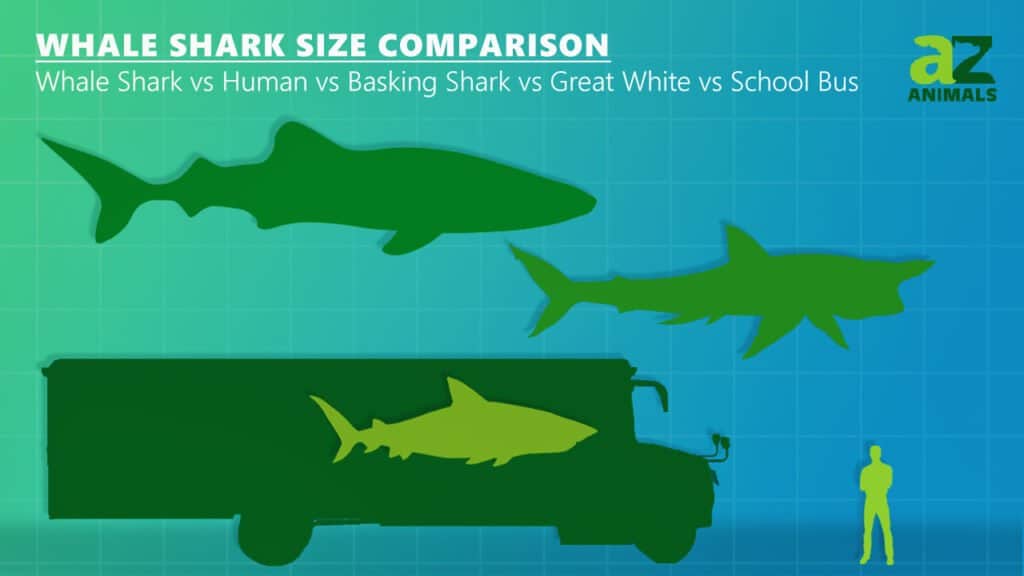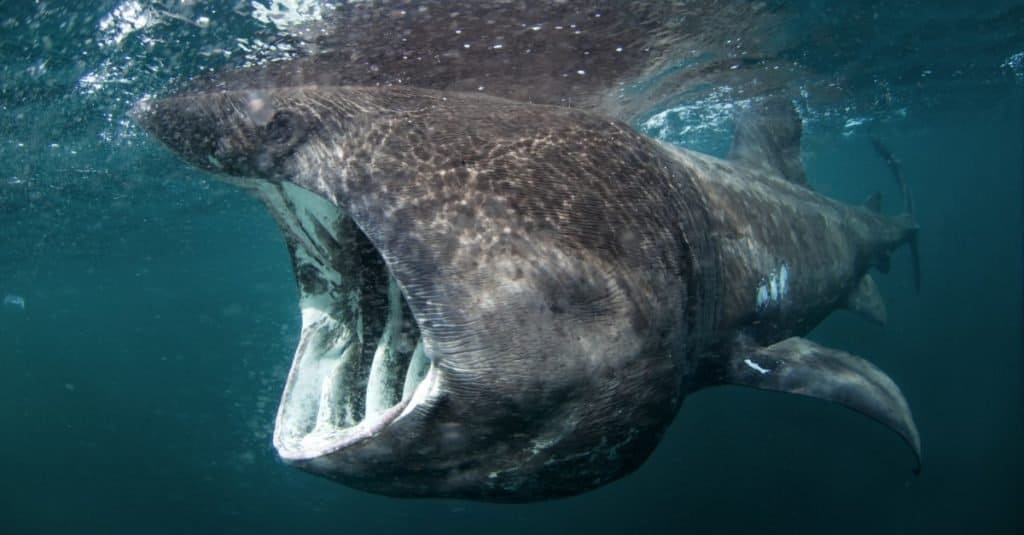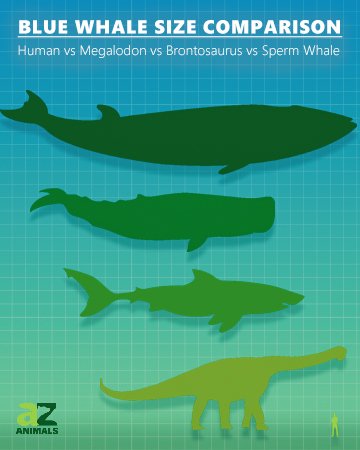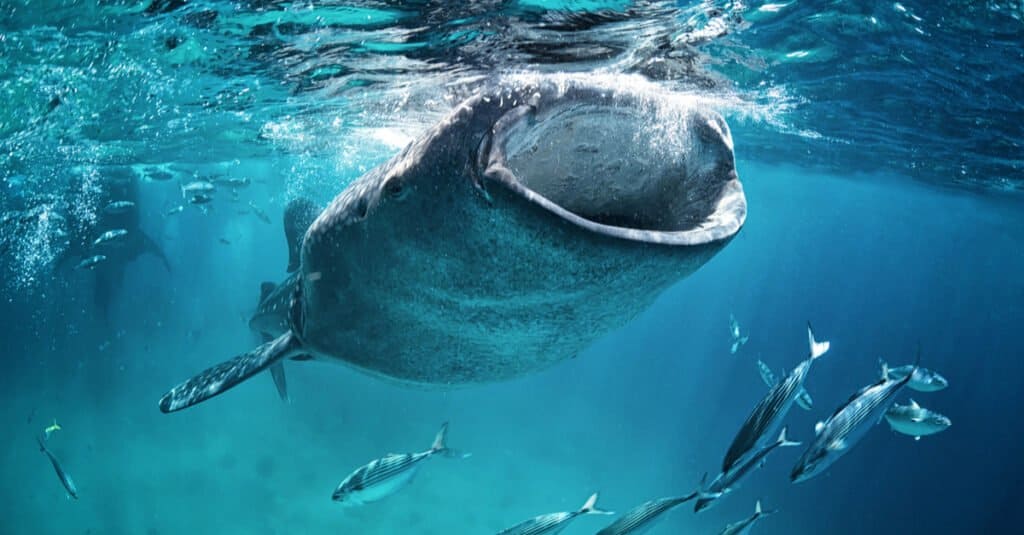What Is the Biggest Whale Shark Vs Blue Whale
Basking Shark vs Whale Shark: Which is Bigger?
Martin Prochazkacz/Shutterstock.com
When it comes to sharks, these two giants reign supreme. The basking sharks and whale sharks are similar-sized filter feeders that roam the ocean. These are two of the largest animals in the world, but when it comes down to it, which is bigger? Let's take a look and see which shark takes the win, as well as learn a bit about two of the ocean's rarest and most beautiful fish species to answer the question – Basking Shark vs Whale Shark: which is bigger?
Basking Shark vs Whale Shark: Which is Bigger?

A-Z-Animals.com
Comparing these two is no easy task, but there is a clear winner. Whale sharks are larger than basking sharks in almost every natural environment. Still, let's take a look and learn some more about the size differences between these two massive fish.
Basking sharks (sometimes known as bone sharks) look incredibly scary but are harmless filter feeders that roam the oceans looking for microscopic food. Basking sharks typically grow to 25 feet, with occasional specimens growing to a total of 30 feet. In addition to their length, fully grown basking sharks weigh up to 8,000 lbs or larger, mostly depending on their length. The largest basking shark ever to have been recorded was 39 feet and weighed an estimated 36,000 lbs. Putting up these sorts of numbers, the basking shark has earned itself the number two spot among the largest sharks in the world today.
With the basking shark being number two, that leaves the whale shark to take the top spot! Whale sharks are the largest fish in the ocean, let alone sharks. While they don't look nearly as scary as basking sharks do, they are similarly harmless as filter feeders. On average, these behemoths clock in at 40 feet long, with some rare specimens being recorded in excess of 60 feet tail to tip. In fact, the largest whale shark on record measured 61.7 feet in length! Additionally, they weigh between 15-20 tons on average, outpacing the basking shark by a substantial margin.
What is larger than whale sharks and basking sharks?

Martin Prochazkacz/Shutterstock.com
Although whale sharks and basking sharks occupy the number one and number two spot of the world's largest fish, there are some animals alive that outpace even these giants—namely, the world's largest whales.
When it comes to average length and mass, there are five species of whale that can contend with the whale and basking sharks. Topping the list is the blue whale. Blue whales can reach over 100 feet long and weigh over 250,000 lbs, making them the largest animals on earth and likely the largest animals in history. Finback whales grow between 72-82 feet, also making them substantially larger than whale and basking sharks. Additionally, right whales, sperm whales, and humpback whales are all larger than our two sharks. Still, even with a few whales species being larger, they are still among the largest animals in the oceans.
What is the biggest shark in history?

A-Z-Animals.com
Whale sharks and basking sharks are the two largest sharks on earth today, but that wasn't always the case. They are the largest "extant" fish species, meaning they are the largest alive, but there are extinct sharks that rival even these two.
The largest shark to ever live is one that many know by name – Megalodon. Megalodon was likely larger than 50 feet long and weighed over 100,000 pounds, conservatively. In short, megalodon was at least twice as large as whale sharks. Although we don't know how often run-ins happened between the species, their ancestors likely met in the open oceans. With the size of prey that megalodon was used to eating, a whale shark could have easily been on the menu.
How do whale sharks and basking sharks get so big?

Fata Morgana by Andrew Marriott/Shutterstock.com
There is a reason that the largest animals in history consistently end up in the ocean. Let's look through a few of the reasons that allow whale and basking sharks to reach such incredible sizes.
Diet
One of the most important factors that allow sea creatures to grow so large is the amount of food available to them. In order to get large and stay large, food is key. Whale sharks and basking sharks are both filter feeders, two of only three sharks alive to live as such. As these sharks swim through the water, they open their mouths and allow water to flow freely through them. As the seawater flows through, it passes into filter pads situated around their mouths. These pads are essentially sponges that let water through but trap small food particles on their surface. A single mouthful of water is hundreds of gallons worth, allowing these filter sharks to capture hundreds of pounds of food each day if needed. Since their prey is so numerous (krill, plankton, and algae), they can grow to truly massive sizes without too much worry when it comes to food.
Lack of predators
The fewer things that are trying to eat you, the longer you live, plain and simple. For whale sharks and basking sharks, that is also true. When they reach adulthood, these fish are so large that no major predators would be interested, let alone able, to take them down. When you reach a certain size, even the largest predators in the oceans don't have the ability to mess with you. For these two sharks, the only vulnerable times in their lives are when they are growing. Juvenile whale and basking sharks are at the most risk of predation, especially from other sharks and predatory fish. At full size, the only real threat to these two fish is the world's greatest apex predator – humans. Sadly, deaths are usually accidental and the result of boat strikes.
Where do these giants live?

Hermes / Creative Commons
Whale sharks can be found in most of the world's temperate climate. They have two major populations, one near the Indian subcontinent and another in the Atlantic. They prefer to stay where the water is warmer, rarely traveling where it drops below 70 degrees. Additionally, they migrate constantly for new feeding and mating areas.
Basking sharks are present in large portions of the Atlantic and Pacific. They prefer cool to temperate climates and avoid the extremes of the poles and the tropics. Like the whale shark, basking sharks migrate year-round in search of food and mating grounds.
More from A-Z Animals
colemanprockleart.blogspot.com
Source: https://a-z-animals.com/blog/basking-shark-vs-whale-shark-which-is-bigger/
0 Response to "What Is the Biggest Whale Shark Vs Blue Whale"
Enviar um comentário